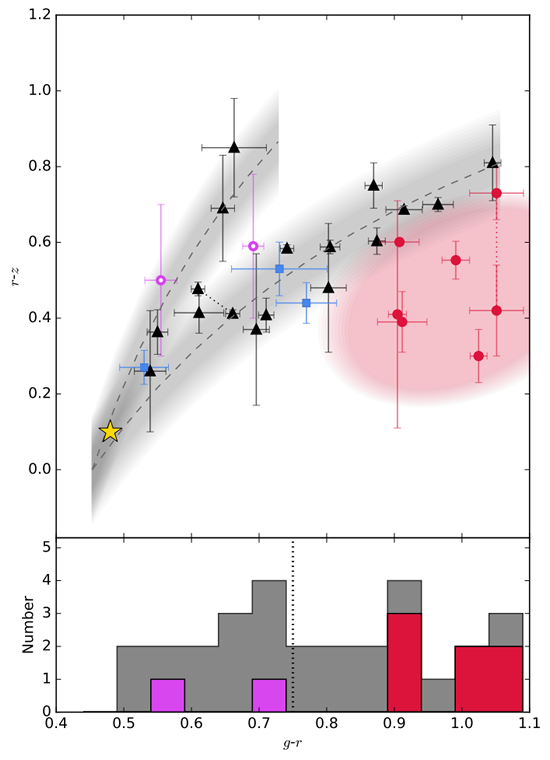研究成果藝廊
TNO surface colors in g, r, and z bands
圖片來源: Pike et. al 2017

g-r and r-z photometry of TNOs, showing the 3 unique surface types revealed by these three bands.
Upper: All targets with z band photometry, identified as dynamically excited TNOs (black triangles), 5:1 resonators (blue squares), or cold classical TNOs (solid red and empty pink circles). In the case of measurements from both Subaru and Gemini in the same semester, a weighted mean is shown. For multiple measurements in different semesters, both are shown connected with a dotted line. Two surface models based on Fraser et al. (2012, dashed lines) for TNO surfaces are plotted and are well matched by the two dynamically excited TNO surfaces. The 'blue binary' cold classical TNOs with neutral surfaces are indicated with pink empty circles, these follow the same color trends as the excited objects. Solar colors are indicated by the star. The cold classical objects clearly occupy a separate clump. The gray arcs and red ellipse are a visual guide to indicate the approximate regions occupied by the three surfaces classes; the width of the arcs is similar to Fraser et al. (2012), but in different photometric bands. Lower: Histogram of g-r color values for these TNOs with approximate separation from the literature at g-r~0.75 (dotted line). Dynamically excited objects (including 5:1 resonators) are shown in gray, cold classicals are red and pink (blue binaries). The histogram does not correctly separate the two dynamically excited surface types.